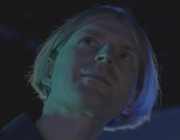(Classical) Quantum Chemistry
My past research in quantum chemistry has focused mostly on classical quantum chemistry, i.e. quantum chemistry running on classical computers. Here I have worked on new free energy simulation methods for biomolecular systems that include nuclear quantum effects. In this context, I have also developed a new hybrid QM/MM (Quanum Mechanics/Molecular Mechanics) method, called QUASAR, that is compatible with free energy simulations and path integral molecular dynamics simulations.
The new QUASAR method I have implemented in a software package called i-QI, a client for the de-facto standard path integral molecular simulation program i-PI.

Quantum Computing for Chemistry & Drug Discovery
My current and future research interests focus on developing new quantum computing-based methods and tools for quantum chemistry and drug discovery. In particular my focus is methods that can run on near-term quantum computers, also called NISQ (Noisy intermediate-scale quantum) devices.

Computer Aided Drug Discovery
In the field of computer aided drug design, one of the topics I have specialized on are ultra-large virtual screenings. Ultra-large virtual screening are virtual screenigns where over 100 million compounds are screened against a given target protein. Here, I have developed VirtualFlow, an open source virtual screening platform that for the first time allowed to carry ultra-large virtual screenings in a routine manner. More information can be found here.

Applied Drug Discovery
Regarding the methods and tools that I am developing for drug discovery, I am very interested in applying them to real-world drug discovery projects. To date, I have worked on over one dozen applied drug discovery projects, most of them with collaborators in different countries around the world. Many of these projects were related to cancer, neurodegenerative diseases, or viral diseases.
One of the targets I have worked on is KEAP1, where the target site was the NRF2 protein-protein interface on KEAP1. Details can be found in our paper (Gorgulla, Nature 2020).
Regarding viral diseases, after the pandemic broke out around the world, I have started to work on COVID-19 drug discovery in collaboration with Google, who generously provided us with funding of over 1 million USD in computing time. Further information can be found in our joint paper with Google (Gorgulla, iScience 2021) as well as our COVID-19 project homepage.

